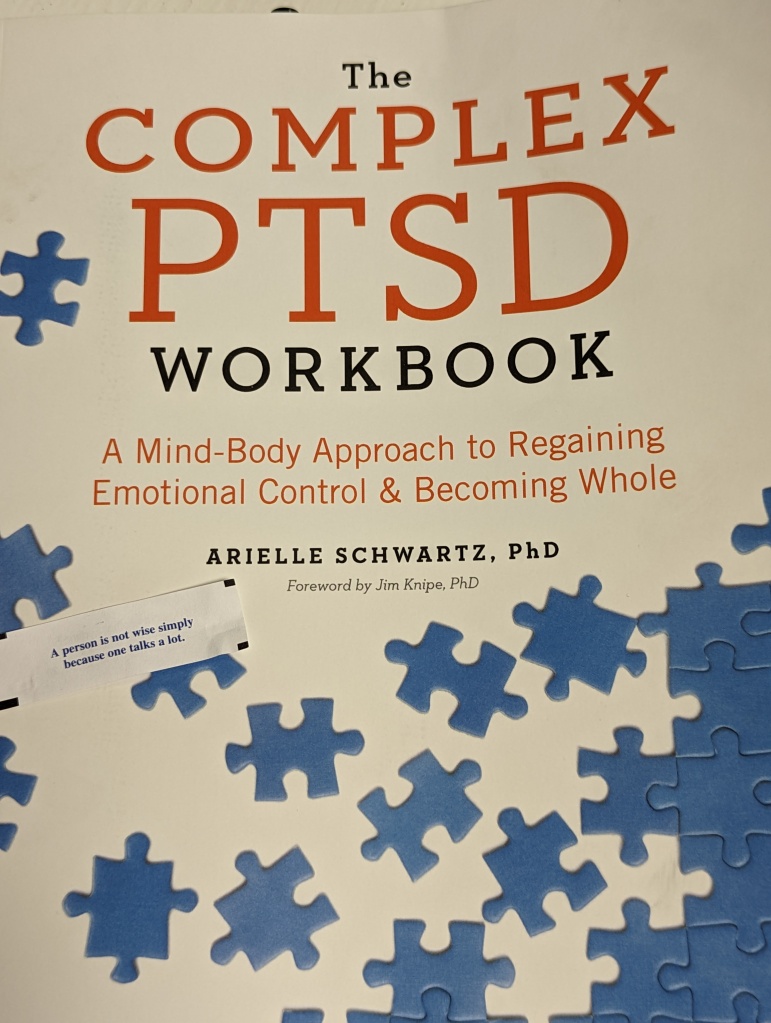“Children are born persons.”
Charlotte Mason
I started my day thinking about this quote. I even mentioned in passing during my morning work day. Then, I went to run errands and grab some lunch. I went across town to a place I often go on Mondays when I’m in town alone, because I can eat quickly and return within the hour, and because I can get a pretty good amount of vegetables on my plate at the same time. I grabbed the workbook I’ve been moving through, thinking I might have a moment to tolerate another page or so before I have to put it down out of a sense of self-preservation.
I was surprised to have my precious waitress ask me if it was a good book! You don’t often have people asking you about your weird psychology trauma books. I enthusiastically showed it to her, flipping through to see how it was a workbook with lines for responses; I jokingly commented that I have so many blank places because I have seven kids, and I didn’t want to traumatize any of them if they stumbled upon it.
Then she surprised me again, with a question no one has ever directly asked me: “Since you have kids, what do you think is the best way to raise them?” After a moment’s deliberation, I responded seriously with that quote. I told her that there’s a thing called gentle parenting, but I like to call it respect parenting. A little hesitantly, I added, “you know how the Bible says we ought to love our neighbor? Well, your kid is the closest person to you. I figure if we treat them like we want to be treated, it will all work out.” We laughed and chatted a bit more and she went about her business.
Normally I would quickly pack up and head back to the office, but I felt strongly as though I was supposed to stay longer. I went ahead and worked through another page (ouch!) and sure enough, she came back. “You know it’s so funny,” she says, “I pray to God and ask him to show me how is the best way to parent my kid, and this is really confirming, you know?” And with her giant, beautiful smile, she starts apologizing for being shy and awkward. I assured her that she was doing a wonderful job, and that I was proud of her. It seemed very important to tell her those words.
Again, I went to pack up, and was rebuffed immediately in my spirit. It wasn’t time yet? I was done with my lunch, and I didn’t want to touch that workbook again. I sat, sipping on my drink with the oddest sense of urgency.
I was not even a little surprised when the waitress appeared a third time, with tears in her eyes. “It’s just that no one has ever told me that, you know?” With her permission, I hugged her, and told her those words we all need to hear:
“The Lord bless you. You’re going to be a good mom. You can do this. It’s going to be okay. Do you know how I know you will be a good Mom? Because you care. You care about being a good Mom, and that means you will be. I needed someone to tell me that, too.”
We went our separate ways with tears in our eyes, and when I sat down in my car to drive away, the little message in the fortune cookie showed me how much I’ve grown. “A person is not wise simply because one talks a lot,” my little white paper encased in cookie and cellophane declared. You see, little me reminded me of all the times I was beaten for talking too much, but the grown me who is healing reminded her how much we accomplished today by sitting and waiting with our uncomfortable feelings, and using our words to heal instead of hurt.





You must be logged in to post a comment.